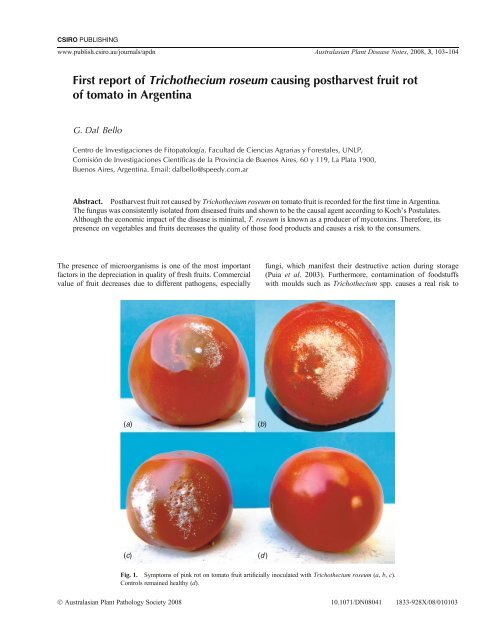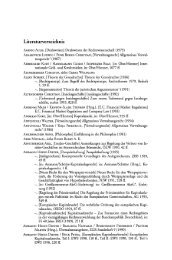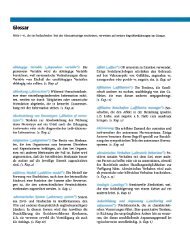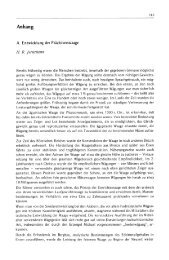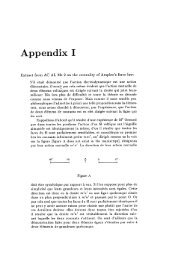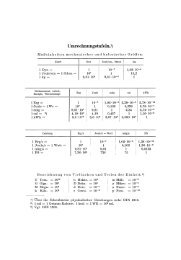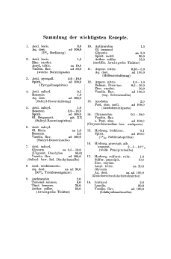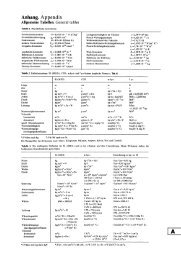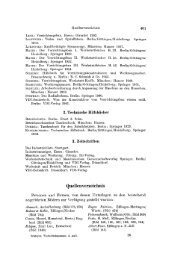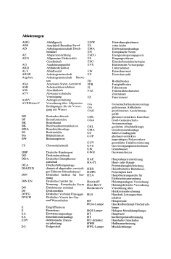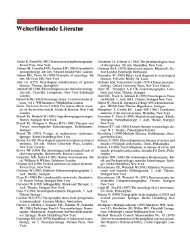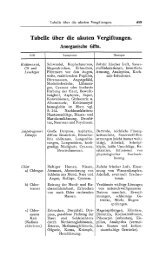First report of Trichothecium ... - Springer
First report of Trichothecium ... - Springer
First report of Trichothecium ... - Springer
Create successful ePaper yourself
Turn your PDF publications into a flip-book with our unique Google optimized e-Paper software.
CSIRO PUBLISHING<br />
www.publish.csiro.au/journals/apdn Australasian Plant Disease Notes, 2008, 3, 103--104<br />
<strong>First</strong> <strong>report</strong> <strong>of</strong> <strong>Trichothecium</strong> roseum causing postharvest fruit rot<br />
<strong>of</strong> tomato in Argentina<br />
G. Dal Bello<br />
Centro de Investigaciones de Fitopatología, Facultad de Ciencias Agrarias y Forestales, UNLP,<br />
Comisión de Investigaciones Científicas de la Provincia de Buenos Aires, 60 y 119, La Plata 1900,<br />
Buenos Aires, Argentina. Email: dalbello@speedy.com.ar<br />
Abstract. Postharvest fruit rot caused by <strong>Trichothecium</strong> roseum on tomato fruit is recorded for the first time in Argentina.<br />
The fungus was consistently isolated from diseased fruits and shown to be the causal agent according to Koch’s Postulates.<br />
Although the economic impact <strong>of</strong> the disease is minimal, T. roseum is known as a producer <strong>of</strong> mycotoxins. Therefore, its<br />
presence on vegetables and fruits decreases the quality <strong>of</strong> those food products and causes a risk to the consumers.<br />
The presence <strong>of</strong> microorganisms is one <strong>of</strong> the most important<br />
factors in the depreciation in quality <strong>of</strong> fresh fruits. Commercial<br />
value <strong>of</strong> fruit decreases due to different pathogens, especially<br />
(a) (b)<br />
(c) (d )<br />
fungi, which manifest their destructive action during storage<br />
(Puia et al. 2003). Furthermore, contamination <strong>of</strong> foodstuffs<br />
with moulds such as <strong>Trichothecium</strong> spp. causes a real risk to<br />
Fig. 1. Symptoms <strong>of</strong> pink rot on tomato fruit artificially inoculated with <strong>Trichothecium</strong> roseum (a, b, c).<br />
Controls remained healthy (d).<br />
Ó Australasian Plant Pathology Society 2008 10.1071/DN08041 1833-928X/08/010103
104 Australasian Plant Disease Notes G. Dal Bello<br />
the health <strong>of</strong> consumers because these fungi are producers <strong>of</strong><br />
mycotoxins (Lugauskas et al. 2005). In particular, tomatoes are<br />
susceptible to numerous fruit decays, from the field through<br />
postharvest handling.<br />
During the summer <strong>of</strong> 2008, postharvest fruit rot was found on<br />
fresh-market tomatoes (Lycopersicon esculentum Mill.) at<br />
storage facilities in La Plata city (34 55 0 S; 57 57 0 W).<br />
Symptoms started as circular, water-soaked lesions, which<br />
enlarged and coalesced into a s<strong>of</strong>t rot covered with white to<br />
pinkish powdery mycelium (Fig. 1). The fruit became watery and<br />
emitted a sour smell. The pathogen was readily isolated by<br />
transferring conidia from diseased tissue onto potato dextrose<br />
agar (PDA) amended with 250 mg/L <strong>of</strong> chloramphenicol. Isolates<br />
were incubated with a 12/12 h light/dark cycle using cool white<br />
fluorescent and near ultraviolet light, at a temperature <strong>of</strong> 20 2 C<br />
for 7 days. After 4--5 days, the fungus produced abundant septate<br />
mycelia, white at first, then pale rosy pink as the conidia<br />
developed; conidiophores long, slender, simple and septate<br />
with conidia which were borne apically and singly, attached in<br />
groups or chains; conidia hyaline or brightly coloured, 2-celled,<br />
ovoid, 12--22 5--10 mm (Fig. 2), appearing in basipetal<br />
succession from the tip <strong>of</strong> the conidiophore. Based on the<br />
morphological structures after single-conidium cultures were<br />
established on PDA, the causal agent was identified as<br />
<strong>Trichothecium</strong> roseum (Pers.) Link (Howard et al. 1994).<br />
Pathogenicity was tested by inoculating surface-sterilised<br />
healthy, ripe tomato fruits with a 20 mL drop <strong>of</strong> aqueous<br />
conidial suspension (10 5 conidia/mL) which was injected to a<br />
depth <strong>of</strong> ~1 mm. Fruits inoculated in the same way using sterilised<br />
water were kept as a control. Inoculated fruit were placed in a<br />
sterilised plastic container at room temperature (21--25 C). Spots<br />
similar to those observed on naturally infected fruits developed on<br />
inoculated tomatoes within 5 days; whereas control fruits<br />
remained healthy (Fig. 1c). <strong>Trichothecium</strong> roseum was<br />
successfully reisolated from the lesions, fulfilling Koch’s<br />
Postulates.<br />
The fungus has been cited causing fruit rot on many crops<br />
including tomato (Welch et al. 1975; Farr et al. 2007). To our<br />
knowledge, this is the first <strong>report</strong> <strong>of</strong> T. roseum causing pink mould<br />
rot on tomato in Argentina.<br />
References<br />
http://www.publish.csiro.au/journals/apdn<br />
Fig. 2. Conidia <strong>of</strong> <strong>Trichothecium</strong> roseum isolated from fruit lesions<br />
(bar = 20 mm).<br />
Farr DF, Rossman AY, Palm ME, McCray EB (2007) Fungal databases,<br />
systematic botany and mycology laboratory, ARS, USDA. Available at<br />
http://nt.ars-grin.gov/fungaldatabases/ [Verified 10 July 2008]<br />
Howard RJ, Garland JA, Seaman WL (Eds) (1994) ‘Diseases and pests <strong>of</strong><br />
vegetablecrops in Canada.’ (The Canadian Phytopathological Society and<br />
The Entomological Society <strong>of</strong> Canada)<br />
Lugauskas A, Raudonienè V, Šveistytè L (2005) Toxin producing<br />
micromycetes on imported products <strong>of</strong> plant origin. Annals <strong>of</strong><br />
Agricultural and Environmental Medicine 12, 109--118.<br />
Puia CE, Popovici EJ, Viorel F (2003) The evolution <strong>of</strong> the fitosanitary status<br />
<strong>of</strong> the stored apples in natural conditions. Journal <strong>of</strong> Central European<br />
Agriculture 4(4), http://www.agr.hr/jcea/issues/jcea4-4/pdf/jcea44-6.pdf<br />
[Verified 10 July 2008]<br />
Welch AW Jr, Jenkins SF Jr, Averre CW (1975) <strong>Trichothecium</strong> fruit rot on<br />
greenhouse tomatoes in North Carolina. Plant Disease Reporter 59,<br />
255--257.<br />
Manuscript received 20 April 2008, accepted 8 July 2008


